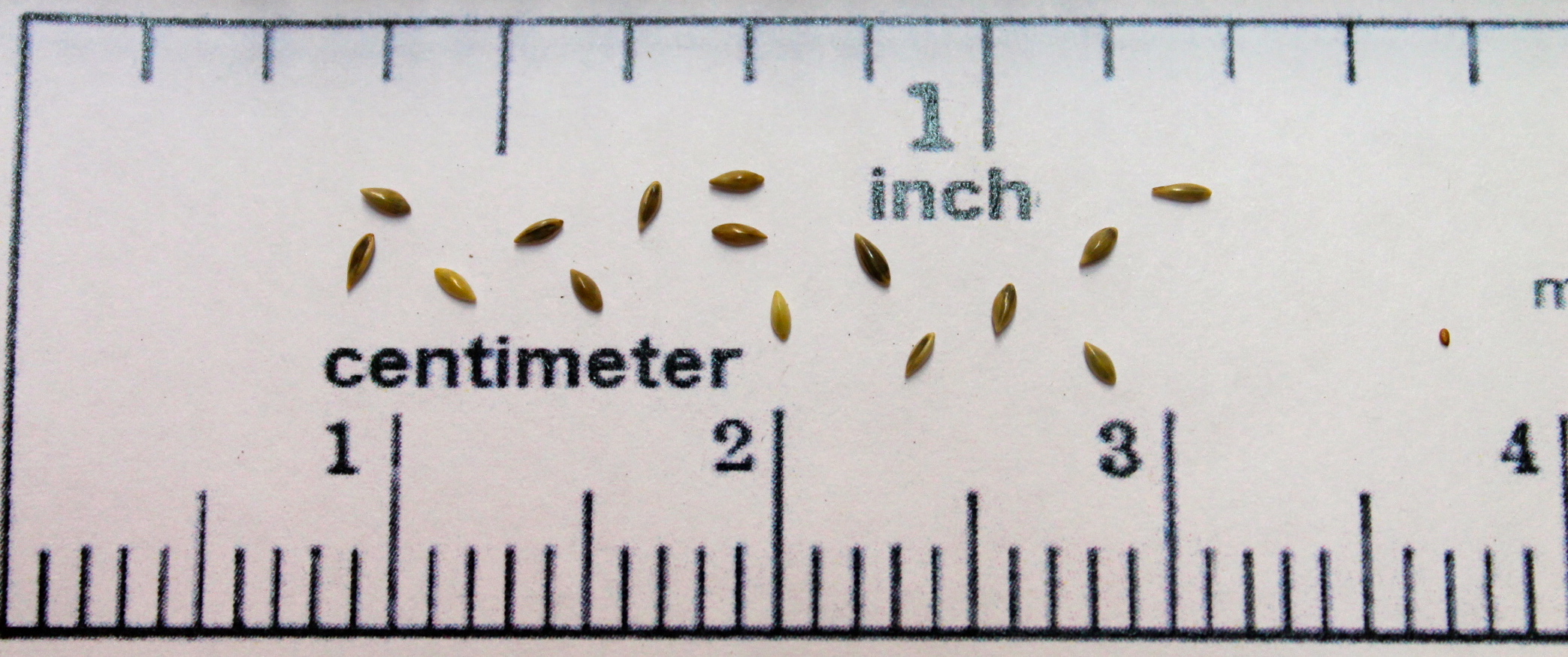Switchgrass, Alamo
Lowland Native perennial bunch Best adapted to soils such as the following: moderately deep, deep, somewhat dry, poorly drained, sandy, or clay loam.
Lowland Native perennial bunch Best adapted to soils such as the following: moderately deep, deep, somewhat dry, poorly drained, sandy, or clay loam. It does poorly on some heavy soils. In the East, it performs well on shallow and droughty soils. Switchgrass grows naturally on prairies, open oak and pine woodlands, shores, riverbanks, and high brackish marshes along maritime forest ecotones. One of the Big 4 Prairie grasses. Most common varieties are Alamo and Blackwell. Alamo produces more forage.
Alternate Names: Panic raide
Uses
Livestock: Switchgrass produces heavy growth during late spring and early summer. It provides good warm-season pasture and high quality hay for livestock.
Erosion Control: Switchgrass is perhaps our most valuable native grass, adapted to a wide range of sites. It stabilizes soil on strip-mine spoils, sand dunes, dikes, gullies and other critical areas. It is also suitable for low windbreak plantings in crop fields.
Wildlife: Switchgrass provides excellent nesting and cover for pheasants, quail, and rabbits. It holds up in heavy snow (particularly ‘Shelter’ and ‘Kanlow’) and is useful on shooting preserves. The seeds provide food for pheasants, quail, turkeys, dove, and songbirds. Due to its potential to spread, some wildlife biologists have reduced or eliminated the use of switchgrass in some plantings.
Biofuel Source: Switchgrass is a native perennial ,warm season grass with the ability to produce moderate to high biomass yields on marginal lands. These characteristics have resulted in the use of switchgrass in several bioenergy conversion processes, including cellulosic ethanol production, biogas, and direct combustion for thermal energy applications.
May become weedy or invasive in some regions or habitats and may displace other vegetation if not properly managed.
|
Grow Height |
Cold Tolerance |
Minimum |
Planting Rate |
|
3-6′ |
Good |
20″ |
4-5 PLS. |
| Weight | 1 lbs |
|---|
Be the first to review “Switchgrass, Alamo” Cancel reply
You must be logged in to post a review.
Related products
Upland Native perennial bunch best adapted to moderately deep, deep, somewhat dry, poorly drained, sandy, or clay loam soils.
An annual grass with each stem bearing an unbranched, erect, flattened, bristly spike of narrow, crowded, greenish-brown spikelet.
Drought resistant plant. Highly adaptable to dryer areas. Also tolerates soil conditions from fair salinity to moderate alkalinity. A highly palatable grass.
Good all-around range grass, especially in shallow soils. This is the largest and coarsest of the grama grasses
Short growing native that has stolons much like buffalo grass. Pale green in color and not a vigorous competitor. Grows in a wide variety of soils.
Generally described as a perennial graminoid. Is native to the Southwest with a long life span and moderate growth rate.
Bunchgrass with erect tufted culms. It is 35 to 75 inches tall. Leaf blades are flat, often less than 1/2 inch wide and 10 to 27 inches long, lax, smooth, and glossy green.











Reviews
There are no reviews yet.